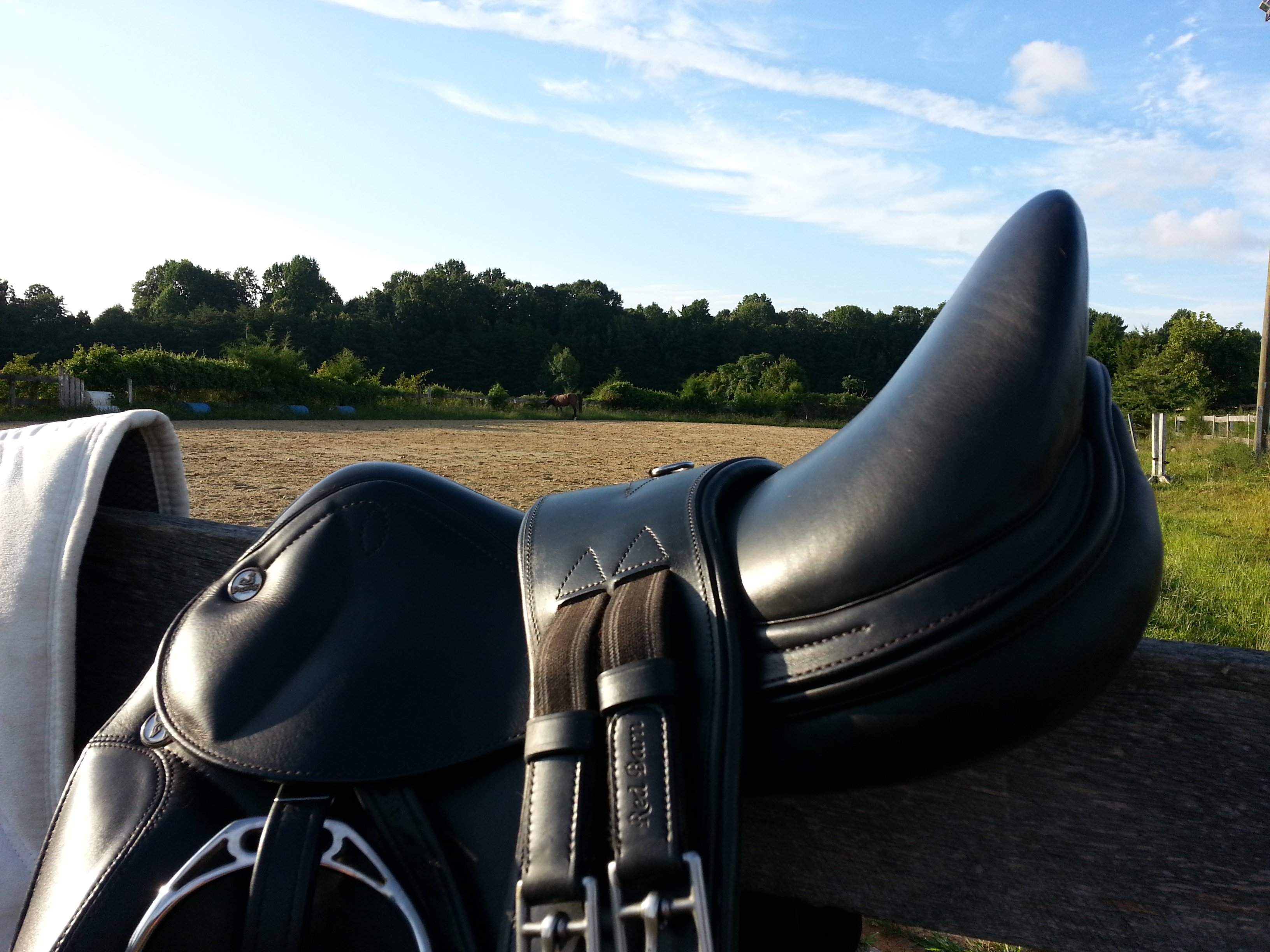It is easy to feel frustrated because I don’t know what to do when Kasane says “no I don’t want to do this.” I know how I used to ride: I’d insist that she do something. With Isis, if I insisted and she wasn’t clear on what I was asking (or more likely I wasn’t sure of how to ask her to do what I wanted), it would end up escalating. Where escalating means that I might kick her and really push her. And then I would be mortified and frustrated because it didn’t feel right but I didn’t know what else to do.
Saturday I talked to Jennifer (dressage instructor) about what I can do to work through times when Kasane resists what I’m asking. It was enlightening because on Saturday Kasane started pulling the same thing she had been doing earlier in our ride on Friday. She didn’t want to keep an even tempo, she was evading contact, rolling from a trot into a canter, etc. She’s a great mare but she can be a handful.) Again, I wasn’t sure exactly how to deal with it.
Jennifer luckily had a little bit of time to be able to watch me ride and give me some pointers. She noted that Kasane’s speeding up and slowing down was indeed an avoidance. She wanted to do what she wanted to do and how dare I ask her. In fact, letting her stretch long and low on Friday night was letting her do what she wanted to do. Not necessarily a bad thing, but she needed to also understand that yes, it’s okay if I insist on something. It’s really a lot easier to do what I ask instead of doing yet more work.
This was what I learned that surprised me. Half-halts have a lot more uses than how I used them. I’ve usually used them for downward speed transitions, like from a trot to a walk for example. My old cue was to squeeze the reins slightly. Not hard, but enough to momentarily increase contact and then return to regular contact. Jennifer taught me a more subtle cue: squeeze with your upper thighs like you are giving them a hug. Gradually, Kasane understood what the cue means and now we can do that instead of pulling on her mouth.
The half-halt can be a way of saying “are you with me?” and checking in when riding. She had me use the half halts in the places where Kasane was speeding up or drifting off the line we were riding. Sure enough, lots and lots of little half-halts. The half-halts did not nag her, instead we suddenly communicated a lot better because we were both paying more attention. The surprising thing was that Jennifer said she might do hundreds of half-halts in a ride.
Then came the moment when Kasane became resistent (head up, shaking head, etc.) and did not want to work in a circle at the Scary End of the ring. She was being silly but I didn’t know what to do. Luckily Jennifer hadn’t left yet and saw me having trouble. She came back into the ring and reminded me of some cues I already knew. If Kasane wants to look to the outside, I needed to set my inside arm against my side with steady contact. The outside had opens and provides support. Inside leg pushes her towards the outside while the outside leg provides support. (I hope that makes sense.) It worked. I was asking her to work harder every time she tried to look to the outside instead of being focused with me.
This kind of riding is really like dancing. There are so many things to remember and do. Jennifer pointed out I knew the cue to use to help ride through the problem but I don’t always remember when to apply it.
In some cases, this feels like such a break through because with Jennifer’s help I could ride through what Kasane was doing and not feel frustrated. Instead there was a calm “yes, this is what we will do, and you can do it!” kind of feeling. And boy, doing half-halts while doing a posting trot is a real work out.





